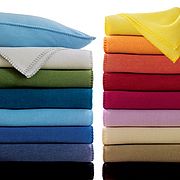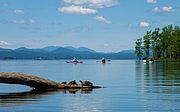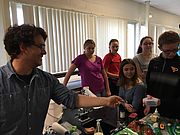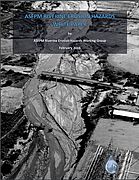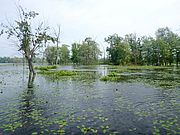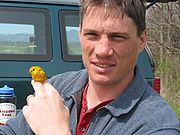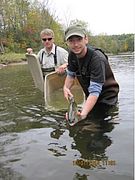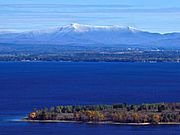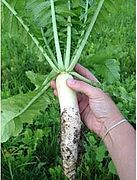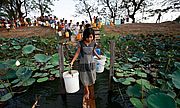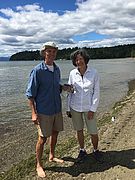On average, synthetic fleece jackets release 1.7 grams of microfibers each wash, which equates to an average of 80,000 microfibers.
Read...News from Selected Month
As state legislatures struggle to take action on long-term funding for water protection and the Trump Administration proposes radical cuts to environmental programs, Doug Facey ponders the value of our lake. Doug is a longtime LCC member and professor of biology at St. Michael's College.
Read...LCC ECO AmeriCorps member and Education and Outreach Coordinator Dominic Brennan has spent several months conducting research and doing site visits at schools in New York and Vermont. The outreach is part of our School Stormwater Assessment Project funded through a grant from the Lake Champlain Basin Program.
Read...It has been over five years since Tropical Storm Irene ravaged our region. Most of the damage from that storm was caused by rivers leaving their channels and carving new routes through fields and homes. The Association of State Flood Plain Managers (ASFPM) released a white paper stressing the dangers posed by erosion hazards. The paper was co-authored by Mike Kline and Rebecca Pfeiffer of the Vermont Department of Environmental Conservation.
Read...The Sandbar wetlands in Milton and Colchester, along with two other unique Vermont wetlands (Dennis Pond in Brunswick and Chickering Fen in Calais) are now classified as 'Class I' wetlands. The designation places extra protections on wetlands with exceptional ecological features. Though most wetlands exhibit substantial levels of plant and wildlife diversity, Class I wetlands are granted additional safeguards from encroaching development because of their irreplaceable values. The three are the first to be granted Class I status in over a decade. Only three other Vermont wetlands have been assigned Class I status: Dorset Marsh in Dorset, Northshore Wetland in Burlington, and Tinmouth Channel Wetland in Tinmouth.
Read...Each February, the arrival of red-shouldered hawks signals the beginning of a procession of surprising regularity, the spring bird migrations. All up and down the Lake Champlain Basin, in woods, wetlands, and on the broad lake, the aerial parade of birds moving from warmer winter climes northward continues in fits and starts, ending with a few straggling ruddy turnstones in June.
Read...In the summer of 2016, the first wild-born salmon was documented in Lake Champlain for the first time in two centuries!
Read...The Open Space Institute (OSI) recently announced acquisition of shoreline property on Lake Champlain to enhance recreational boating and mountaintop hiking opportunities while protecting local water quality. Easily seen from western Vermont and the city of Burlington, the property also offers views of Lake Champlain and the Green Mountains to the east, and the Adirondack High Peaks to the north and west. The property features more than 4,000 feet of Lake Champlain frontage and is also the scenic backdrop to Schuyler Island, a renowned day trip for area kayakers and boaters.
Read...Every month, Vermont's Clean Water Initiative Program highlights a "Clean Water Superstar", species that help keep waters swimmable, drinkable, and fishable. A past entry was the Raphanus sativux L, the oilseed radish. Since it's gardening season we thought we'd highlight its benefits in the excerpt below.
You don't have to be a fan of a radish's spicy crunch to reap the benefits of planting them in your garden. Although edible, oilseed, tillage, daikon, or forage radish is more commonly used as a cover crop.
How many people have access to clean and safe water? Where do they get it from and how much do they pay for it? A report by the World Health Organisation/Unicef Joint Monitoring Programme delves into data on drinking water from the last 17 years to give a detailed view of the state of access to drinking water today.
Read...Help assess Lake Champlain water conditions around the lake. Complete our cyanobacteria monitor interest form if you're interested in monitoring during the 2017 season or want to attend a training session to learn more about the lake. Feel free to share this invite with other lake lovers.
Read...
